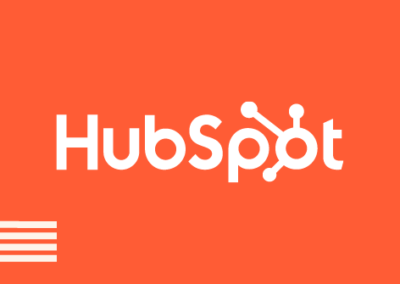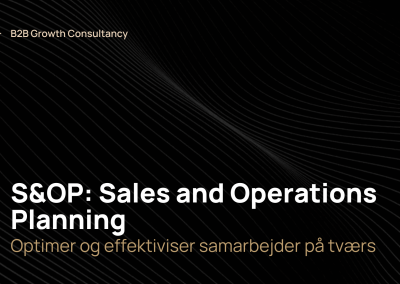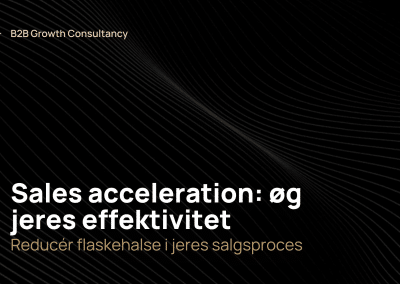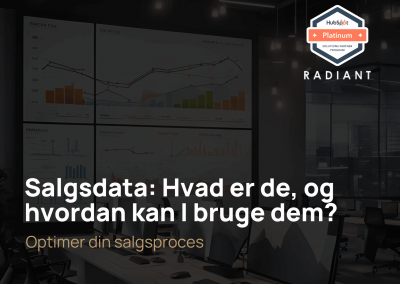so Sales are most effective when prioritizing time on hot leads. The question is, how do you as a B2B company assess the quality of your leads in HubSpot and in general? Learn how to use lead scoring in HubSpot to increase B2B sales.
Have you heard of the term “hot leads”? It describes the leads that are most relevant to work with, and where the chance of a sale is best. It is, by nature, the hot leads that are the most interesting to spend time on, but it requires you to be able to quickly assess which ones are the hottest.
You can do that with lead scoring in HubSpot CRM.
With lead scoring, you rank your visitors according to how committed they are to the company’s content, and how well they fit into the target audience. It requires you to define how many points a lead should be awarded (or deducted), when, for example, clicking on a link in a newsletter, looking at a particular page on the website, and the like. You set the criteria – they will differ from company to company.
Based on the individual leads score, HubSpot automatically ranks them on a scale that makes it easy for the sales department to see which ones are ready to buy. With a sharp lead scoring model, you set the foundation for effective sales.
RELATED ARTICLE: B2B segmentation – understand your customers and sell more
Choose the qualifying criteria carefully
If your work with lead scoring, is to lead to success, it is essential that you set appropriate criteria for your leads. Ask yourself what defines the ideal lead in your business and what you need to know about it, before you can land a sale.
As a rule of thumb, lead scoring works the best if you work with two types of data: Implicit and Explicit. The implicit data tells how the respective leads interact with your marketing activities online, while the explicit data deals with external factors such as demographics – for example:
Implicit data – a lead has:
- Tried a demo
- Seen the price list
- Participated in a webinar
- Downloaded an e-book
- Read relevant content.
Explicit data – the leads:
- Financial data
- Master data
- Industry
- Digital maturity
- Level of decision making
When setting the criteria, you can start with a list of all the different ways a person can interact with your business online – before they become a customer. Quite frankly, you can “clone” the criteria of your most loyal customers. In parallel, you compile a list of the qualification factors at the company or individual level, that your prospects may have, and which are the most important for your relationship.
RELATED ARTICLE: B2B marketing automation & HubSpot – a match made in heaven
Assign the criteria point values
To identify, categorize and measure your leads, you must have a point system. We recommend that you work with a scale ranging from 0-100, as it provides room to weigh the various criteria. A lead’s overall score indicates how “hot” it is – and whether it is open to dialogue with a salesperson.
When assigning points value, take the lists from the previous step and prioritize how important the respective criteria are. The most important criteria must, of course, have the most points.
By letting HubSpot automatically assign your leads a score, you systematize the sales work and make sure that the sales reps always work with the hottest and most current leads.
Be patient with lead scoring
In our Sales as a Service concept – and as a HubSpot partner, we have seen many companies be too impatient and unstructured in their approach.
There is no doubt, that lead scoring is a powerful tool in streamlining the company’s B2B sales. At the same time, it is essential to mention, so that you need be patient. You rarely get it right at first.
If you want the optimal return, the company’s lead scoring model must be followed and adjusted on an ongoing basis. As a starting point, this is an exercise that must be done across the sales and marketing departments so the setup works for both parties. In other words, it requires patience. Feel free to seek inspiration from a HubSpot partner – or, for example, from Radiant and our concept: Sales as a Service.



